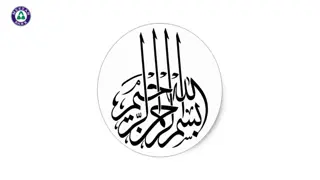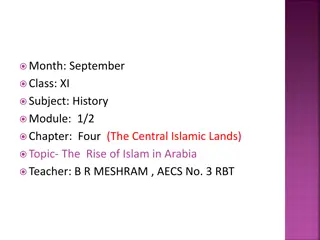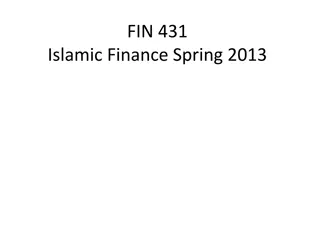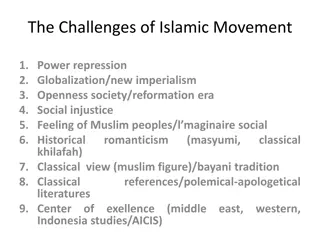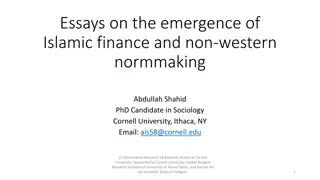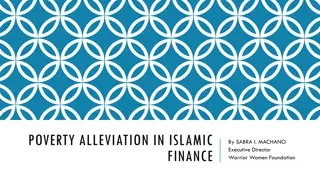Baghdad - The Islamic Golden Age and Its Cultural Legacy
Baghdad, during the Islamic Golden Age, was a center of culture, knowledge, and innovation. It was home to scholars, artists, poets, and philosophers who made significant contributions to various fields. The city's cultural richness and intellectual vibrancy played a crucial role in shaping the Islamic world's advancements in science, philosophy, medicine, and education.
Download Presentation

Please find below an Image/Link to download the presentation.
The content on the website is provided AS IS for your information and personal use only. It may not be sold, licensed, or shared on other websites without obtaining consent from the author.If you encounter any issues during the download, it is possible that the publisher has removed the file from their server.
You are allowed to download the files provided on this website for personal or commercial use, subject to the condition that they are used lawfully. All files are the property of their respective owners.
The content on the website is provided AS IS for your information and personal use only. It may not be sold, licensed, or shared on other websites without obtaining consent from the author.
E N D
Presentation Transcript
BAGHDAD The Islamic Golden Age is traditionally dated from the mid-7th century to the mid-13th century at which Muslim rulers established one of the largest empires in history.
ORIGINS The name Baghdad is pre-Islamic, related to previous settlements on the site Arab authors give different hypothetical explanations: the most common of which is given by God or gift of God Others tend to give the name an Aramaic origin meaning, the home or enclosure of sheep
Abbasid Caliph Mansur; Called his city Madinat al-Salam (city of peace). This was the official name on documents, coins etc. Yhe city was built mainly of sun-burnt bricks The plan of Baghdad reflects social ideas. Each quarter had a person in charge, and generally had a homogeneous group, ethnically or by vocation. Markets play a prominent part in the plan of Baghdad.
Baghdad was a great centre of culture. It was the home of the Hanaf and Hanbal school of law. It was the centre for translations, in the Bayt al-Hikma and out side, and of some scientific experimentation. Its mosques, especially the Jami al-Mansur, were great centres of learning. The large number of bookshops which were sometimes literary salons, indicates the extent of cultural activities.
Its poets, historians, and scholars are too numerous to mention. Not only caliphs, but ministers and dignitaries gave every encouragement to learning. The creative period of Islamic culture is associated with the city
During this period, artists, engineers, scholars, poets, philosophers, geographers and traders in the Islamic world contributed to agriculture, the arts, economics, industry, law, literature,navigation, philosophy, sciences, sociology, and technology, both by preserving earlier traditions and by adding inventions and innovations of their own.
Also at that time the Muslim world became a major intellectual centre for science, philosophy, medicine and education. In Baghdad they established the House of Wisdom , where scholars, both Muslim and non-Muslim, sought to gather and translate the world s knowledge into Arabic in the Translation Movement. Many classic works of antiquity that would otherwise have been forgotten were translated into Arabic and later in turn translated into Turkish, Sindhi, Persian, Hebrew and Latin.
A Center for Learning As the city of Baghdad grew, it developed a reputation for learning and research. Scholars from all across the Islamic world were attracted to Baghdad, quickly turning it into an intellectual hub. This was no surprise because Islam puts so much emphasis on acquiring knowledge.
House of Wisdom Caliph Haroon al-Rasheed is credited with expanding the glory of Baghdad to its greatest height during his reign from 786 to 809 C.E. He created an intellectual ambience by encouraging mathematicians, astronomers, scientists, and philosophers. His son, Caliph al-Mamoon went a step further by establishing the House of Wisdom in, an academic institute devoted to translations, research, and education. It quickly became one of the most famous centers of learning, attracting scholars from all over the world, from many cultures and religions. Here, teachers and students worked together to translate Greek, Persian, Syriac and Indian manuscripts.
They studied the works of Aristotle, Plato, Hippocrates, Euclid, Ptolemy, Pythagoras, Brahmagupta and many others. Then, they began building on and testing the knowledge of the greatest ancient scholars, resulting in the development of the scientific method of observation and experimentation.
University During the later part of the 11th century, Baghdad introduced the precursor to the modern university in the form of a chain of madrasahs which housed students and a salaried faculty. They were known as the Nizamiyah, after their founder Nizam al-Mulk, a Seljuk vizier. The largest and most splendid of these was located in Baghdad; the great theologian al-Ghazali and the celebrated historian of Saladin, Baha Eddin, were lecturers there.
The al-Mustansiriyah college was established in 1234 C.E. by Caliph al-Mustansir. It was a large two-storied building, oblong in shape, with a courtyard in the center. Housing and food were provided for those students who required it. The curriculum included religious studies, mathematics, medicine, and history, among other subjects.
The Scholars of Baghdad It is impossible to list and deal with all the scholars who lived and worked in Baghdad in the centuries of Islamic scientific glory (7th- 13thcenturies CE). Thus, here we concentrate on some who represented diverse disciplines.
Al-Fazari Muhammad ibn Ibrahim he was an astronomer that flourished around the second half of the 8thcentury CE in Baghdad. He is first heard of in connection with the building of Baghdad in the latter half of 762, when he was associated with the other early scholars of Islam: Nawbakht, Masha'Allah and Umar ibn Al Farrukhan Al-Tabari who were themselves involved in the same task. The first work that Al- Fazari completed was the Zij Al-Sindhind Al- kabir which bore much Indian influence.
Yuhanna ibn Sarabiyun known in Latin as Ibn Serapion (beginning of 9th century) and not to be mistaken with the physician Yahia Ibn Sarafyun, was a geographer. He authored a book on geography containing a description of the various seas, islands, lakes, mountains and rivers of the world. His descriptions of the Euphrates and Tigris and of the Nile are very significant. His account of the canals of Baghdad is our main basis of the reconstruction of the medieval plan of that city.
Abu Al-Wafa Al-Buzjani (940-998) as his name indicates, he was born in Buzjan (Quhistan) but he flourished in Baghdad where he died. He was an astronomer and mathematician. Abu Al-Wafa was the greatest mathematician of the tenth century, according to Kattani. He wrote commentaries on Euclid, Diophantos and Al-Khwarizmi (all lost); astronomical tables (zij Al-wadih) of which we possibly have a later adaptation; a practical arithmetic; "the complete book" (Kitab Al-kamil) and a book of applied geometry (Kitab al handasa).
Al Karaji (sometimes spelt as Al- Karkhi) Abu Bakr ibn Muhammad ibn Al-Husayn (Al-Hasan) (ca. 1000) was a mathematician active in Baghdad. Virtually nothing is known of his origins, teachers or education, except what he himself wrote: "When I arrived in Iraq and saw how both small and great people loved and venerated science, I began to write works on arithmetic and geometry, one quickly after another, until I went back to the mountain countries [cities located between Azerbaijan, Iraq, Kurdistan, Persia, and the lands bordering on the Caspian Sea] where I came to stay."
Al-Ghazali known in Europe as Algazel, was one of the most illustrious Muslim scholars. He was born in 1058 near the city of Tus and died in 1111. He was the son of a poor, illiterate man and as a youth he studied law, theology and philosophy before becoming a teacher of law. He became famous throughout Islam for his eloquence and learning. Al-Ghazali spent much of his life teaching and writing, staying in Jerusalem, Damascus and Baghdad where he flourished and where he taught at the Nizamiyyah College.
'Ali ibn 'Isa He was a notable oculist (kahhal) of Baghdad whose life falls in the first half of the 11thcentury. His main work is Tadkirat Al-kahhalin (Manual for Oculists or Note-book of the Oculists). It is the classical handbook of Muslim ophthalmology, translated once into Hebrew and twice into Latin, and was printed with the title of Tractatus de oculis Jesu Halis in Venice in 1497, 1499 and 1500. It is the oldest Muslim work on ophthalmology that is complete and survives in the original state.
Al-Badi Al-Asturlabi (d. 1140) died at Baghdad; he was a Muslim astronomer and director of astronomical observations in the palace of the Seljuk Sultan of Iraq, Mughith Al-Din Mahmud; he compiled astronomical tables known as the Zij Al- Mhamudi (The Mahmudic tables); the greatest expert of those times in the knowledge and construction of astrolabes. He made astronomical observations in Baghdad in 1130.
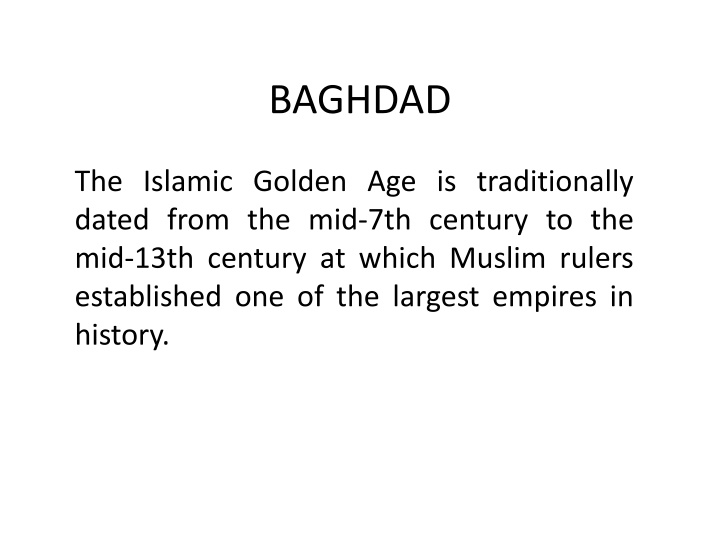

![❤[READ]❤ Robotic Exploration of the Solar System: Part I: The Golden Age 1957-19](/thumb/21623/read-robotic-exploration-of-the-solar-system-part-i-the-golden-age-1957-19.jpg)

